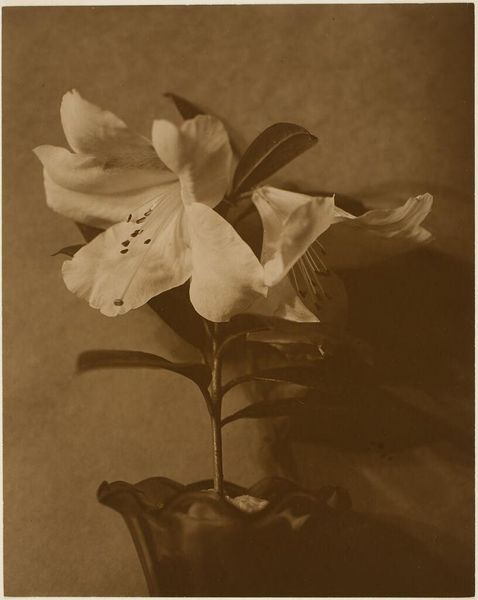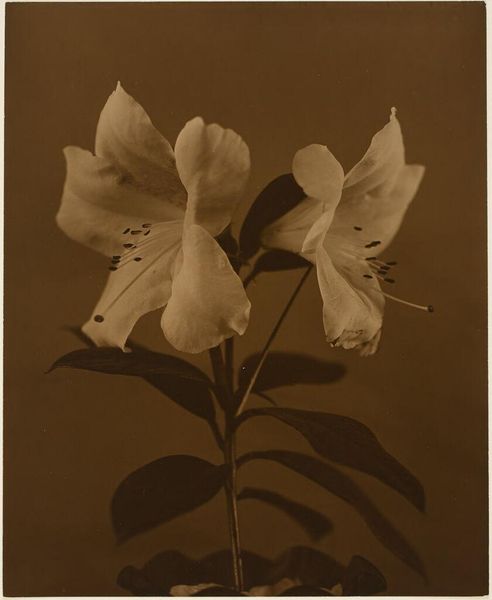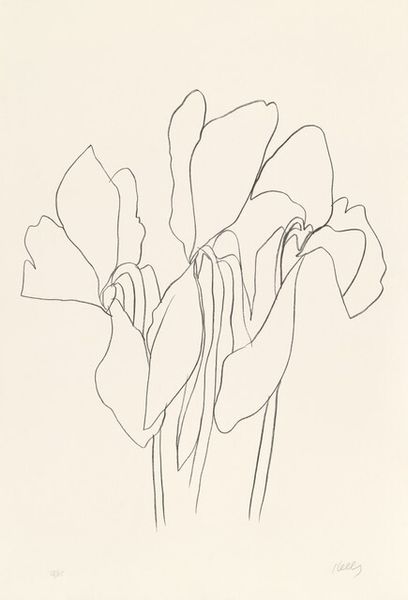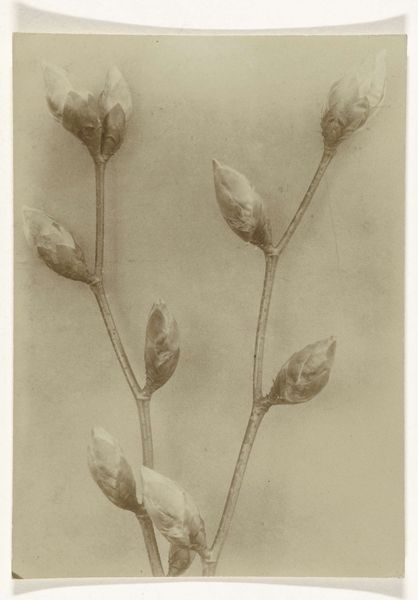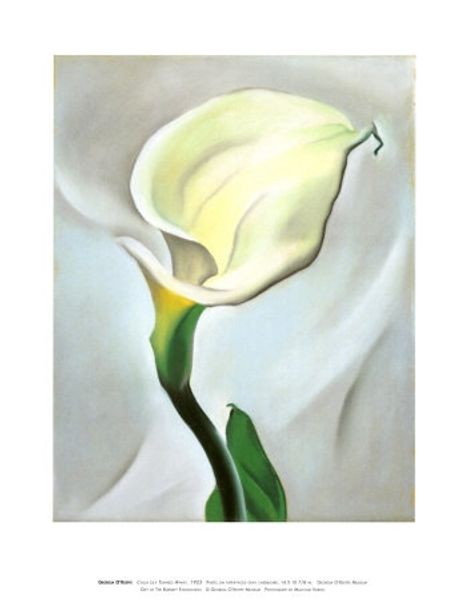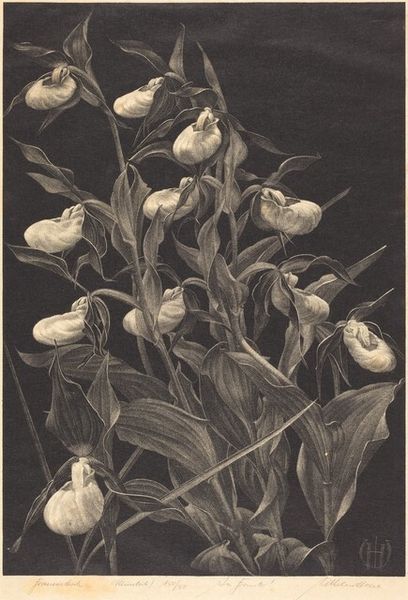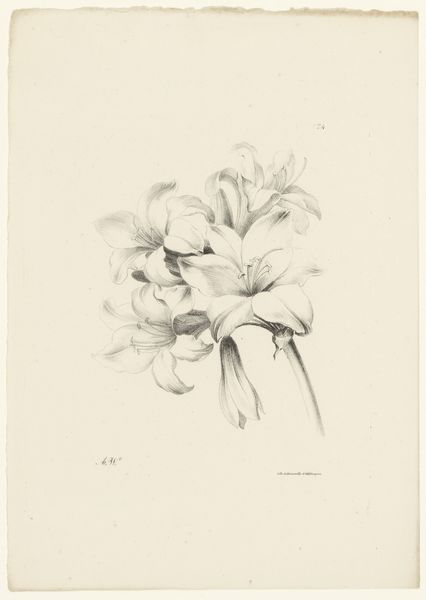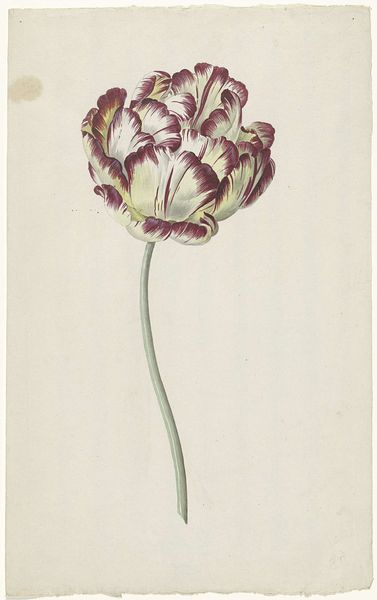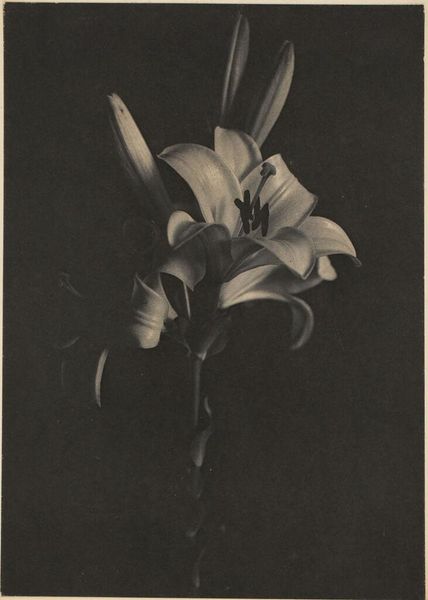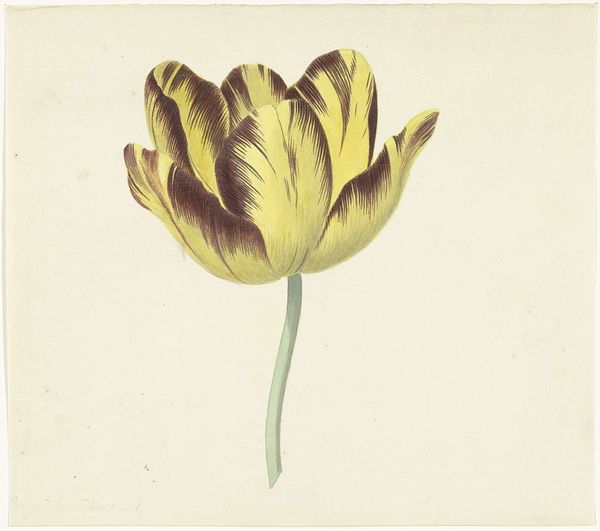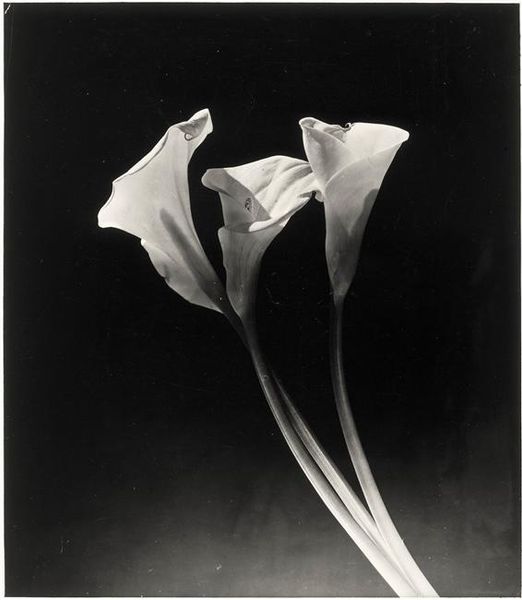
Dimensions: height 164 mm, width 118 mm
Copyright: Rijks Museum: Open Domain
Curator: Richard Tepe's photograph, "Drie Tulpen" or "Three Tulips", created sometime between 1900 and 1930. The photograph is currently held in the collection of the Rijksmuseum. Editor: It's so muted! An exercise in tone more than colour, the way the stems curve seems deliberately, carefully arranged. Curator: Yes, the tonal range is limited. Note how Tepe models the forms of the tulip heads through delicate gradations of light. The composition itself—a trio—suggests a conscious structuring of the picture plane, directing the viewer's eye. Editor: Tulips have a complex, loaded history, of course. They represented wealth, even speculative mania during the Dutch Golden Age. Do you see echoes of that cultural memory here? Curator: Perhaps, though Tepe strips the image down to its formal elements. We see the essence of the tulips—their shape, texture, their relationship to each other—without any explicit reference to the flower's symbolic baggage. Editor: Yet, those curving stems...they imply growth, reaching for light. They also feel restrained, almost posing in this controlled studio environment. Aren’t tulips, as emblems of spring, hope, and fleeting beauty, always laden with the pathos of temporality? Curator: Indeed, and that's where the power of its form lies. There’s a tension between the deliberate, structural control and the natural, organic forms captured. Editor: Tepe offers such restraint in emotional register. We often consider the photograph capturing a moment, or an emotion, in time. This image suggests a stillness that supersedes temporality. It presents these tulips in their essential nature beyond the cultural context that gives them cultural and psychological meaning. Curator: It makes you question what truly constitutes the ‘essence’ of this piece. Editor: So many interpretations come to mind when you strip an image down to its most elemental.
Comments
No comments
Be the first to comment and join the conversation on the ultimate creative platform.
